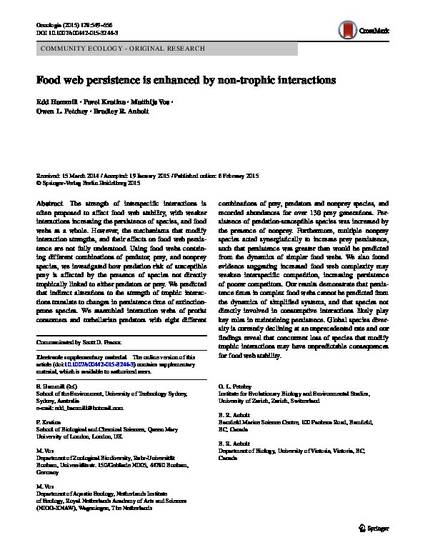
Article
Food web persistence is enhanced by non-trophic interactions
Oecologia
(2015)
Abstract
The strength of interspecific interactions is often proposed to affect food web stability, with weaker interactions increasing the persistence of species, and food webs as a whole. However, the mechanisms that modify interaction strengths, and their effects on food web persistence are not fully understood. Using food webs containing different combinations of predator, prey, and nonprey species, we investigated how predation risk of susceptible prey is affected by the presence of species not directly trophically linked to either predators or prey. We predicted that indirect alterations to the strength of trophic interactions translate to changes in persistence time of extinction-prone species. We assembled interaction webs of protist consumers and turbellarian predators with eight different combinations of prey, predators and nonprey species, and recorded abundances for over 130 prey generations. Persistence of predation-susceptible species was increased by the presence of nonprey. Furthermore, multiple nonprey species acted synergistically to increase prey persistence, such that persistence was greater than would be predicted from the dynamics of simpler food webs. We also found evidence suggesting increased food web complexity may weaken interspecific competition, increasing persistence of poorer competitors.
Disciplines
Publication Date
2015
DOI
DOI 10.1007/s00442-015-3244-3
Citation Information
Edd Hammill. "Food web persistence is enhanced by non-trophic interactions" Oecologia Vol. 178 Iss. 2 (2015) p. 549 - 556 Available at: http://works.bepress.com/edd-hammill/43/
